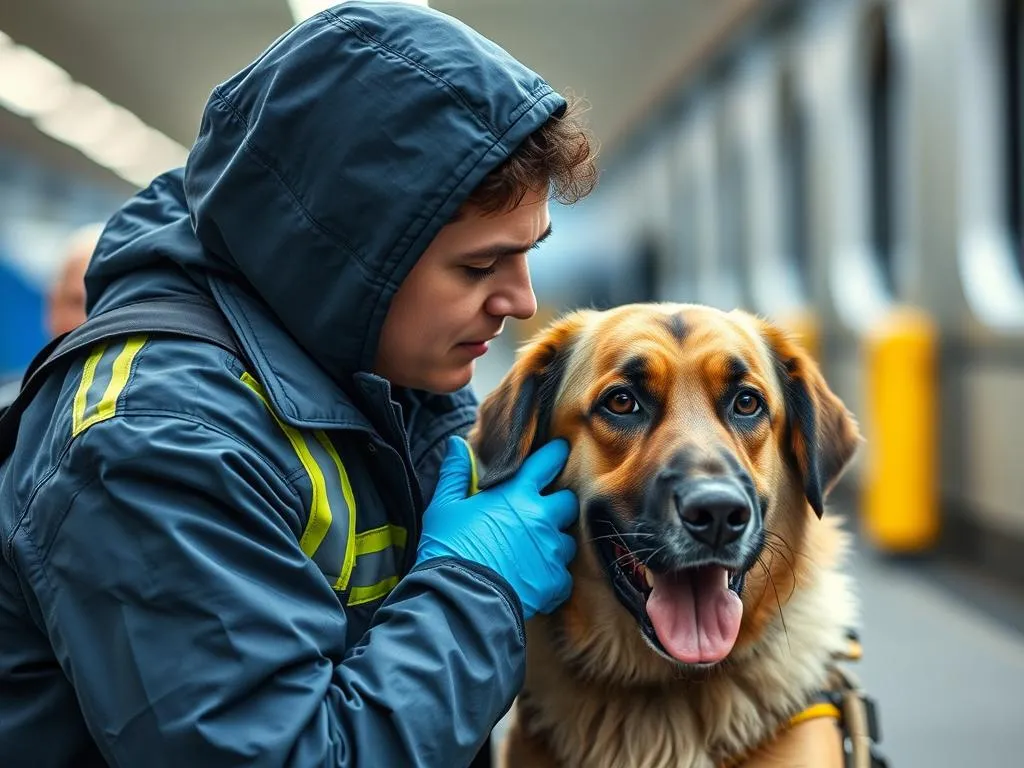
Introduction
Service dogs are specially trained to assist individuals with various disabilities, enhancing their quality of life and independence. Guide dogs, a subset of service dogs, are specifically trained to help visually impaired individuals navigate their environments. While both types of dogs share the common goal of aiding humans, the tasks they perform differ significantly.
The training of service dogs, including guide dogs, is crucial for their effectiveness. It provides them with the skills needed to assist their handlers safely and reliably. In this article, we will explore how long it will take to train a service or guide dog, examining the various factors that influence training duration and detailing typical training timelines.
Understanding Service Dog Training
Types of Service Dogs
Service dogs can be categorized into various types based on their specific functions. Some common types include:
- Mobility Assistance Dogs: These dogs help individuals with physical disabilities by providing support for balance, retrieving items, and opening doors.
- Medical Alert Dogs: Trained to detect medical conditions such as seizures or low blood sugar, these dogs alert their handlers before an episode occurs.
- Guide Dogs: Specially trained to assist visually impaired individuals, guide dogs help navigate obstacles and ensure safe travel.
Training Process Overview
Training a service dog involves several key steps that ensure the dog is well-prepared to assist its handler. The training process typically includes:
- Basic Obedience Training: This foundational training teaches essential commands such as sit, stay, and come.
- Socialization: Exposing the dog to various environments, people, and other animals is critical for developing a well-adjusted service dog.
- Specialized Training: After mastering basic obedience, the dog undergoes training tailored to the specific tasks it will perform.
Socialization and obedience are foundational skills, making them essential components of the training process. Without these basics, a service dog may struggle to effectively assist its handler.
Factors Influencing Training Duration
Several factors can significantly influence how long it will take to train a service or guide dog. Understanding these factors is crucial for prospective trainers and handlers.
Age of the Dog
The age at which training begins can impact the overall training duration. Generally, the optimal age for starting training is around 8 to 12 weeks. At this age, puppies are highly receptive to learning. However, older dogs can still be trained, albeit with potentially longer timelines, as they may have established habits that need to be unlearned.
Breed Considerations
Certain breeds are more commonly used as service dogs due to their temperament and physical attributes. Breeds such as Labrador Retrievers, Golden Retrievers, and German Shepherds are often preferred for their intelligence and eagerness to please. The breed’s inherent traits can affect how quickly a dog learns new tasks, ultimately impacting training duration.
Individual Dog Temperament
Every dog is unique, and their individual temperament plays a significant role in training. Factors such as a dog’s energy level, focus, and willingness to learn can affect how quickly it picks up new skills. A highly motivated dog may advance more quickly than a timid or distracted one, leading to variability in training timelines.
Training Methods
The training methods employed can also influence how long it takes to train a service dog. Positive reinforcement techniques, such as clicker training, have been shown to be effective in promoting learning and retention. Conversely, harsh training methods may lead to fear or anxiety, ultimately prolonging the training process.
Typical Training Timelines
Training a service or guide dog is a gradual process that spans several stages. Below are typical timelines for various training phases.
Puppy Training (8 weeks to 6 months)
During the early months of a dog’s life, the focus is primarily on basic obedience training and socialization experiences. This phase typically lasts from 8 weeks to around 6 months and includes:
- Basic Commands: Teaching commands like sit, down, and stay.
- Socialization Experiences: Introducing the puppy to different environments, people, and sounds to foster adaptability.
This foundational phase is critical, as it sets the stage for more advanced training.
Advanced Training (6 months to 2 years)
Once a dog has mastered basic obedience and socialization, it will move on to advanced training, which can last anywhere from 6 months to 2 years. This phase includes:
- Specialized Skills: Teaching the dog specific tasks required for service work, like retrieving items or guiding a visually impaired individual.
- Proficiency Achievement: Dogs typically take 1 to 2 years to achieve proficiency in their specialized tasks, depending on the complexity of the skills required.
Training durations can vary widely based on the factors previously discussed, including the dog’s age, breed, and individual temperament.
Ongoing Training and Certification
After completing initial training, ongoing training is essential to maintain the dog’s skills. Service dogs must regularly practice their tasks to ensure reliability. Additionally, many organizations require certification for service dogs, which can extend training timelines as dogs undergo assessments to confirm their abilities and behaviors.
Comparing Training Times for Guide Dogs vs. Other Service Dogs
Training Duration Differences
When comparing the training times for guide dogs versus other types of service dogs, there are notable differences. Guide dogs typically undergo more extensive training due to the unique skills required for navigating obstacles and ensuring their handler’s safety. Training a guide dog can take anywhere from 18 months to 2 years, while other service dogs may complete their training in a shorter timeframe, depending on their tasks.
Specific Skills Required for Guide Dogs
Guide dogs must master a range of specific skills, including:
- Navigating Obstacles: Guide dogs are trained to identify and navigate around obstacles in their path.
- Stopping at Curbs: They must learn to stop at curbs and other changes in elevation.
- Following Commands: Guide dogs are trained to respond to verbal and physical commands from their handlers.
These specialized skills contribute to the longer training duration for guide dogs compared to service dogs trained for other functions.
Factors Leading to Longer or Shorter Training for Guide Dogs
Environmental factors can also impact the training duration for guide dogs. For instance, training in urban settings may require additional exposure to distractions such as traffic, crowds, and noise. This increased complexity can extend training timelines for guide dogs compared to those trained in quieter, rural environments.
Case Studies and Real-Life Examples
Success Stories
Several service dog training organizations have shared inspiring success stories. For example, one organization reported that a Labrador Retriever named Max was trained in just 14 months to assist a young boy with mobility challenges. Max’s training included specialized tasks such as retrieving dropped items and providing balance support.
Challenges Faced
Despite success stories, many challenges can arise during training. Some dogs may struggle with specific tasks, while others may experience anxiety in busy environments. Recognizing these challenges is essential for trainers and handlers to adapt their training methods and timelines accordingly.
Variability in Individual Cases
It’s important to note that variability exists in individual cases. While some dogs may complete their training ahead of schedule, others may take longer due to unforeseen circumstances. Personal experiences can differ widely, and patience is crucial in the training process.
Resources for Service Dog Training
Professional Training Organizations
Several reputable organizations specialize in service dog training. These organizations often provide structured programs that cater to various needs and types of service dogs. Their expertise can help streamline the training process and improve outcomes for handlers.
DIY Training Resources
For those interested in a more hands-on approach, numerous resources are available for self-training. Books, online courses, and instructional videos can provide valuable guidance on training techniques and best practices. These resources can be particularly helpful for individuals who wish to train their own service dogs from an early age.
Support Networks
Joining support networks can be beneficial for service dog handlers. Online communities and forums allow individuals to share experiences, seek advice, and connect with others facing similar challenges. These networks can provide emotional support and practical tips for navigating the complexities of service dog training.
Conclusion
In summary, understanding how long it will take to train a service or guide dog involves considering various factors such as the dog’s age, breed, temperament, and the training methods employed. The training process is typically divided into stages, with puppy training focusing on basic obedience and socialization, followed by advanced training that develops specialized skills.
The variability in training timelines is influenced by the unique needs of each dog and handler, making it essential to remain patient and adaptable throughout the process. Whether you are considering training a service dog or exploring the possibility of obtaining a guide dog, the journey will undoubtedly be rewarding and life-changing.









